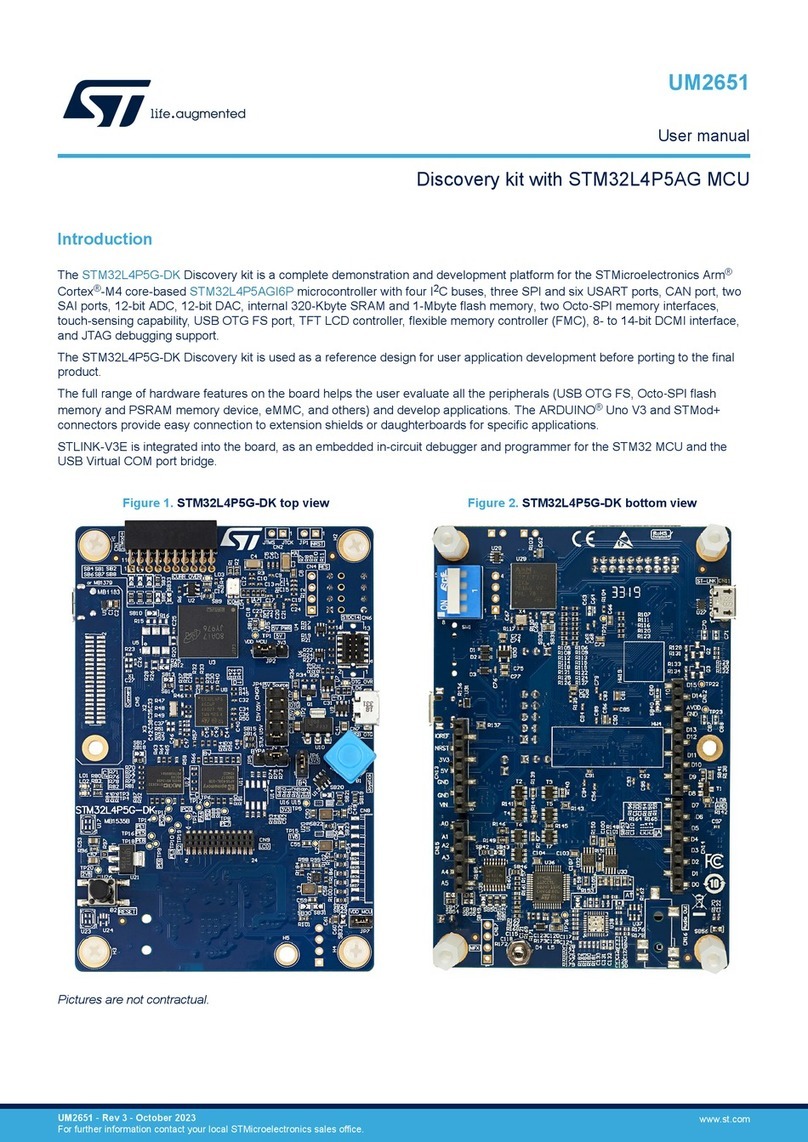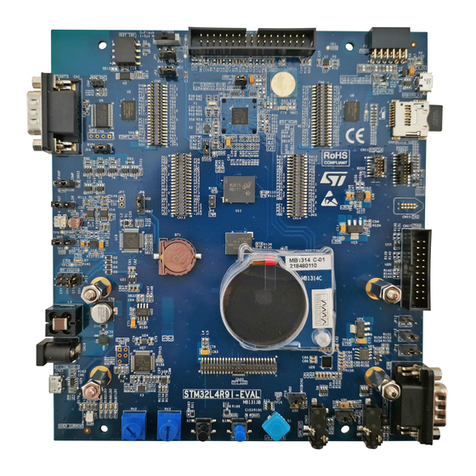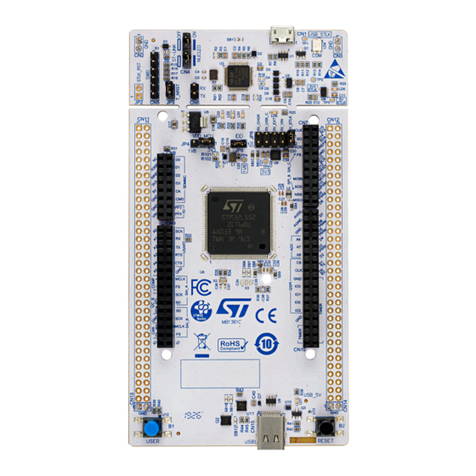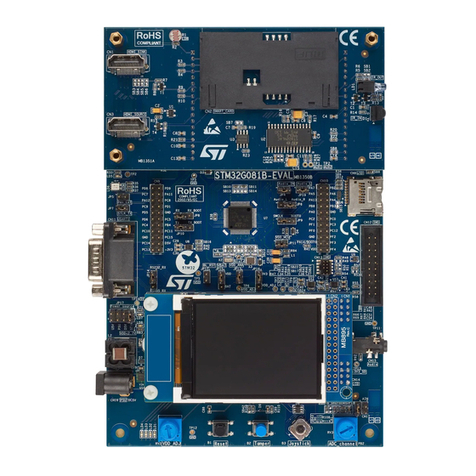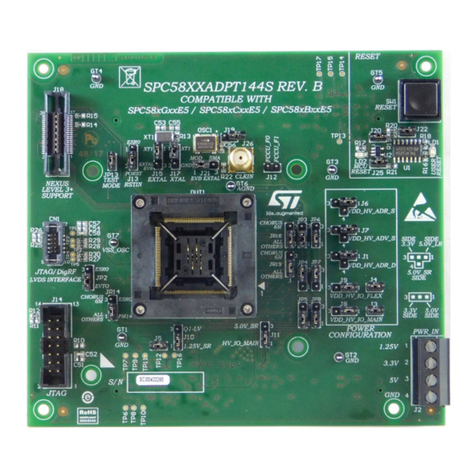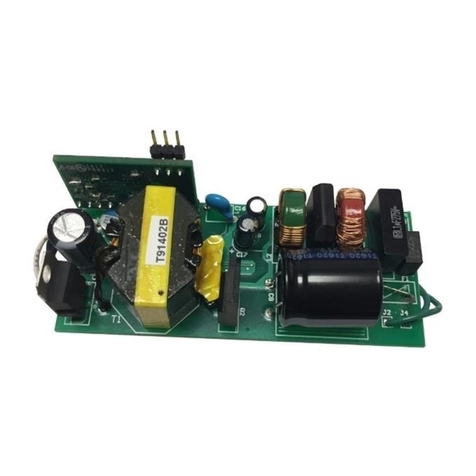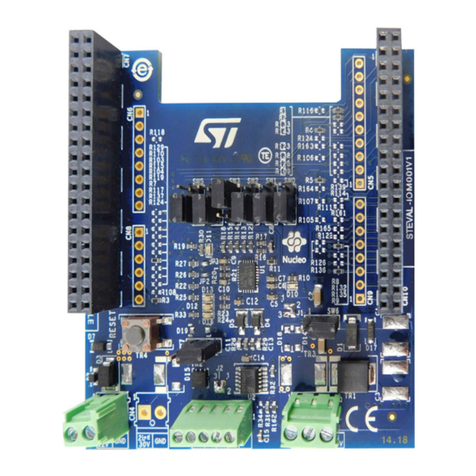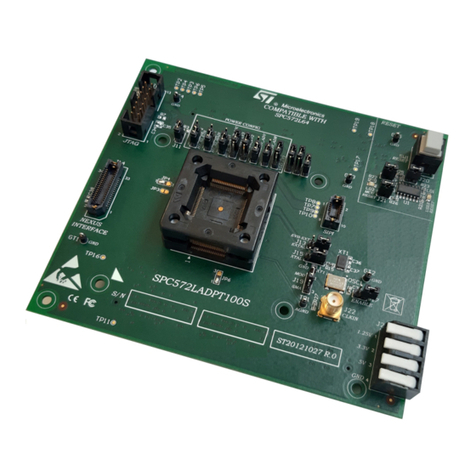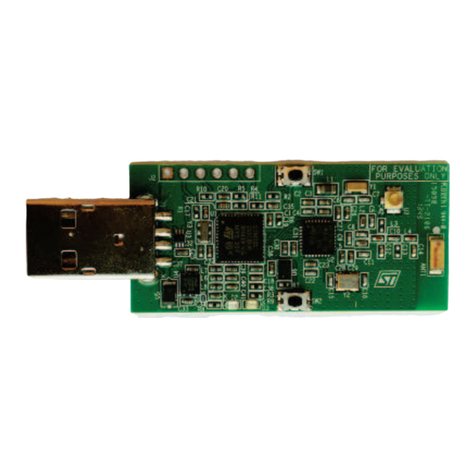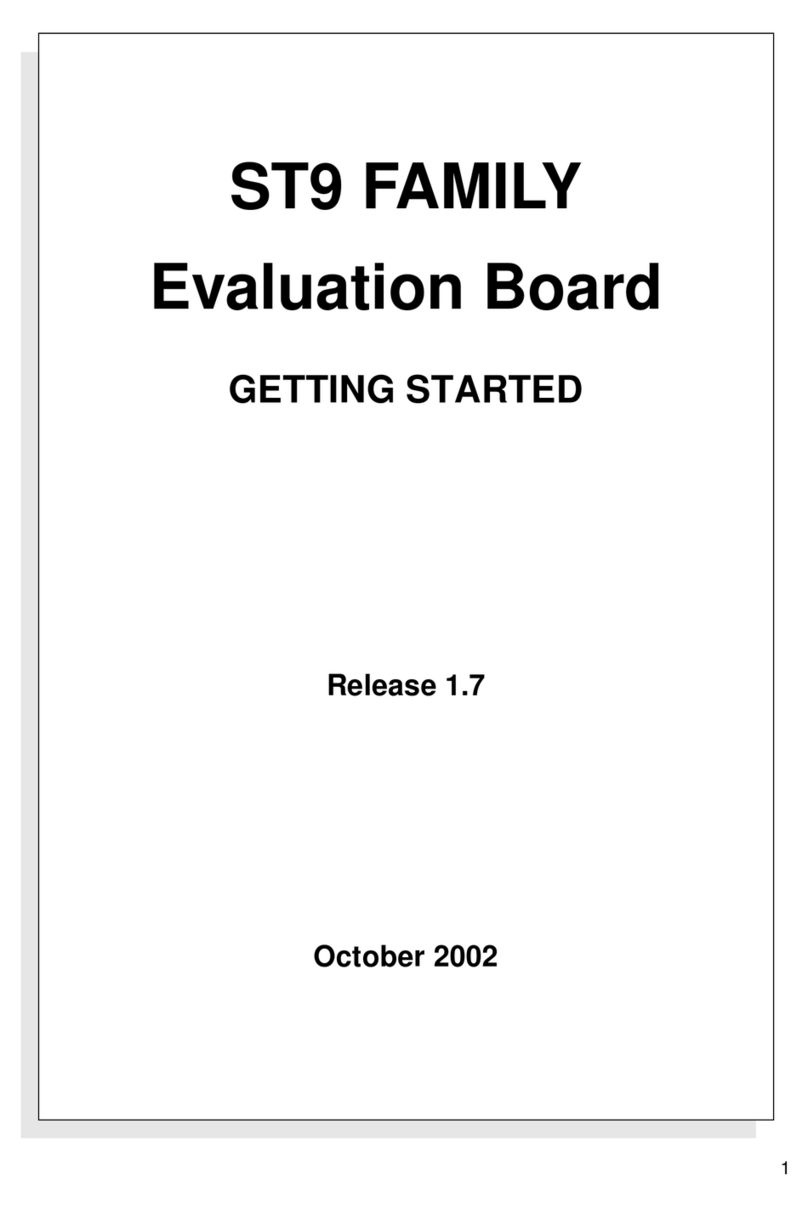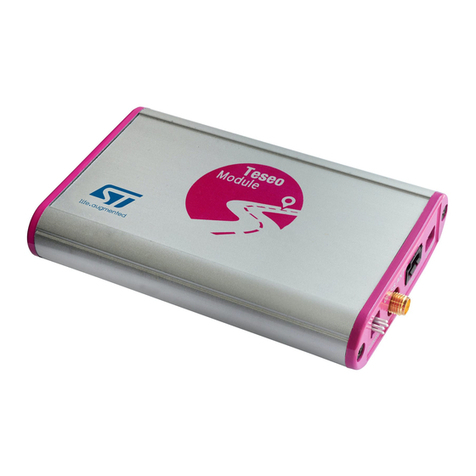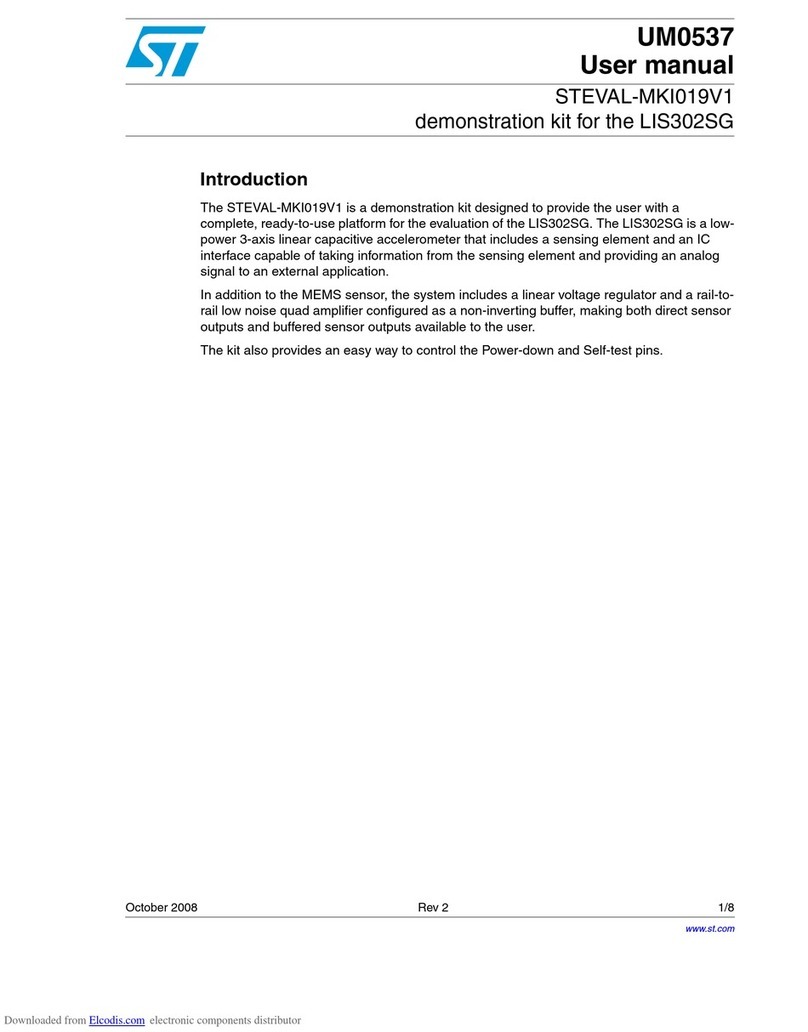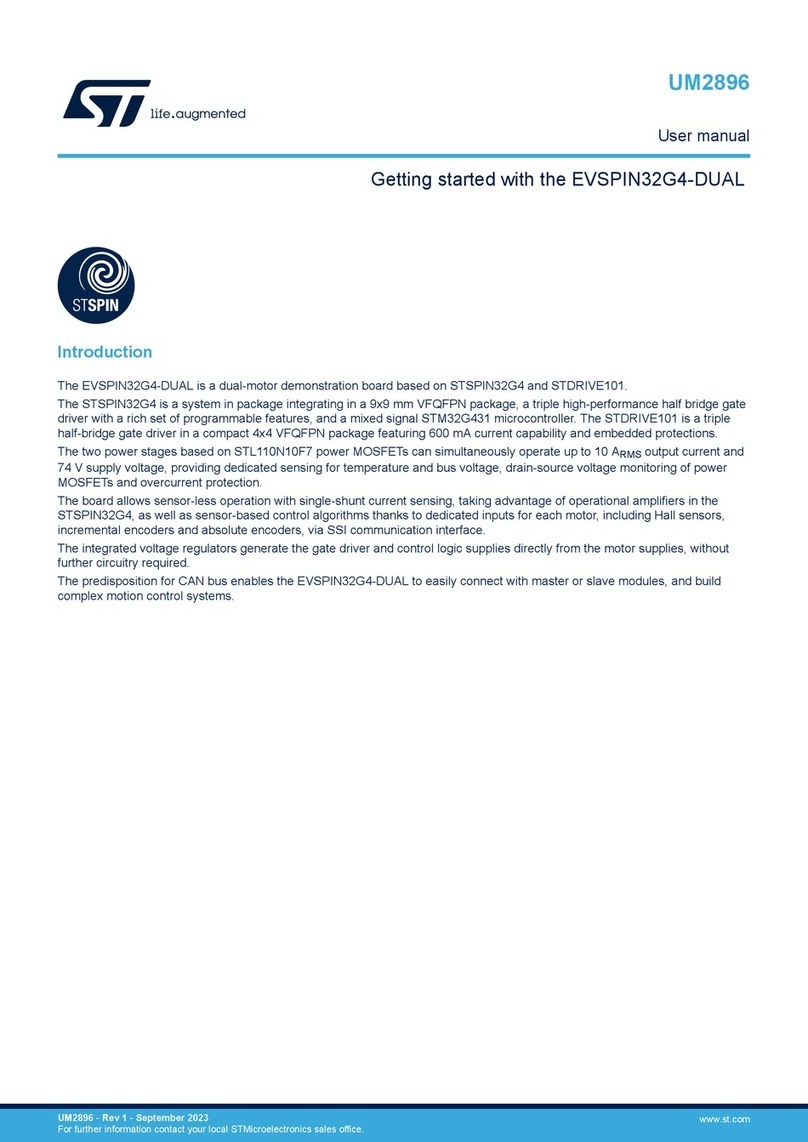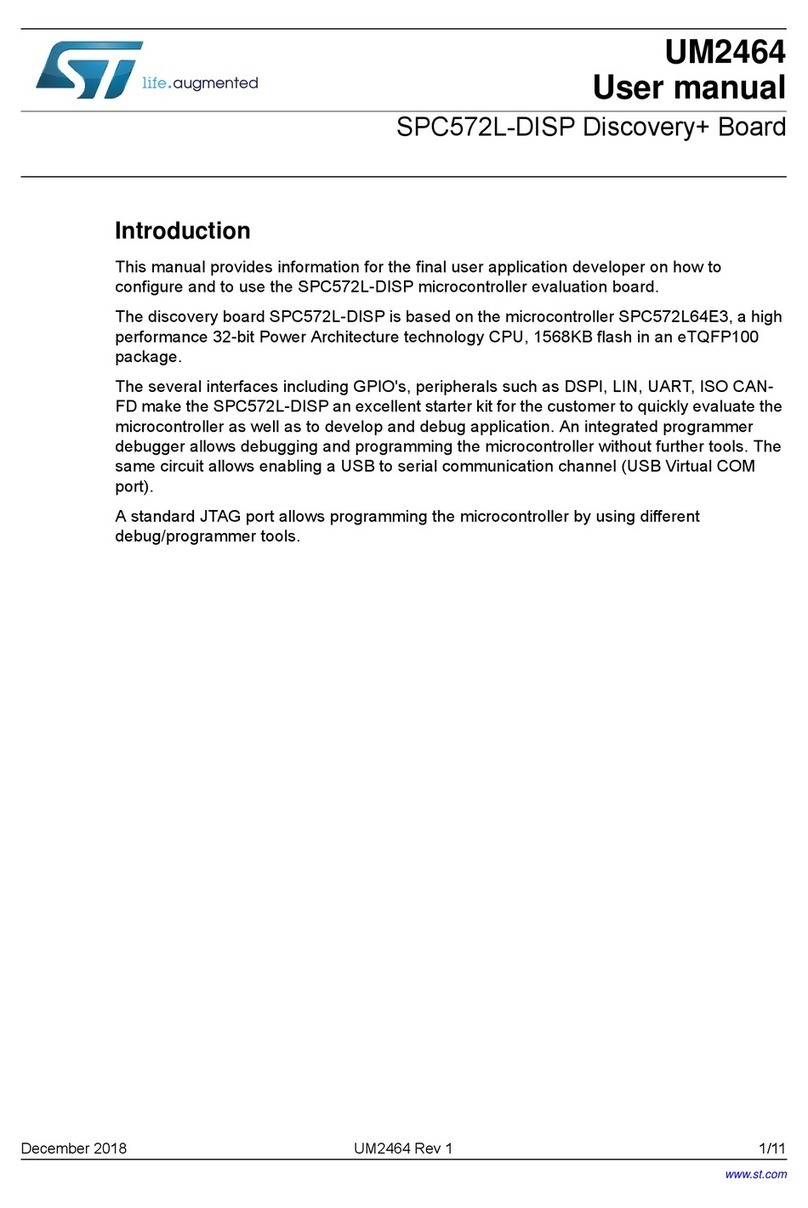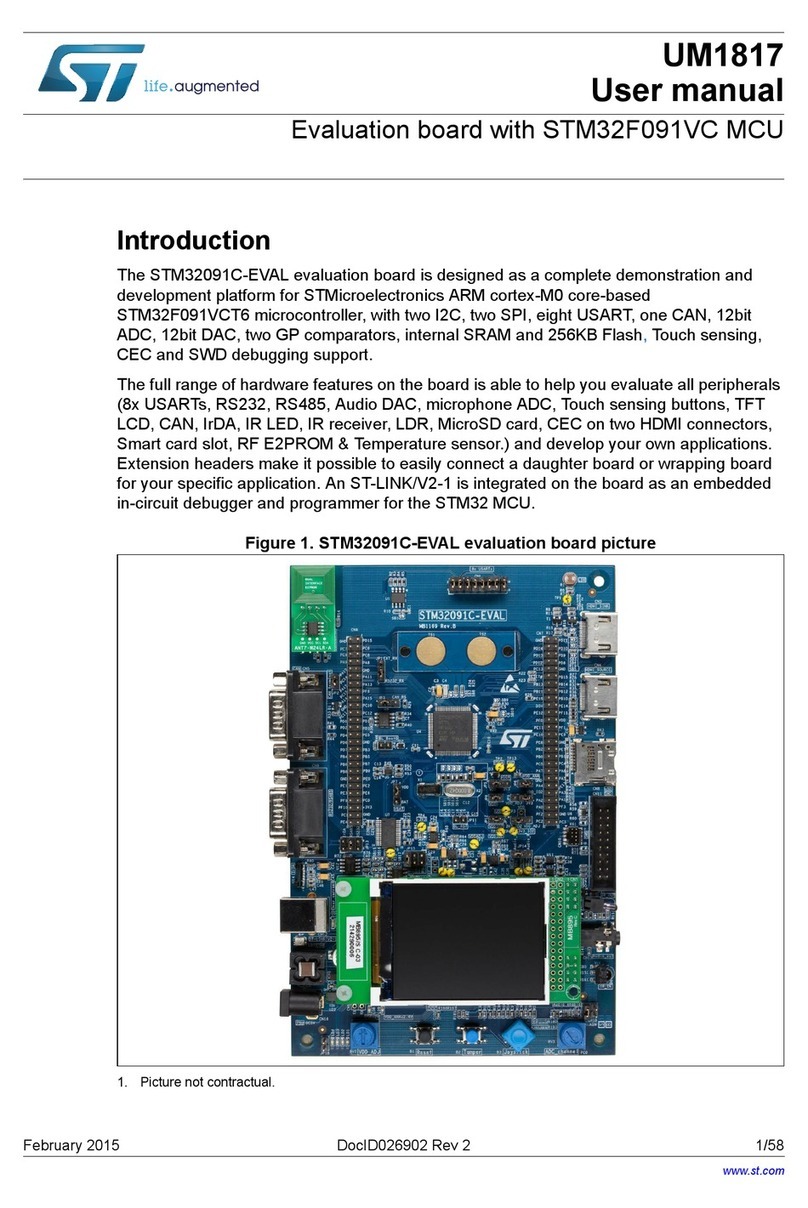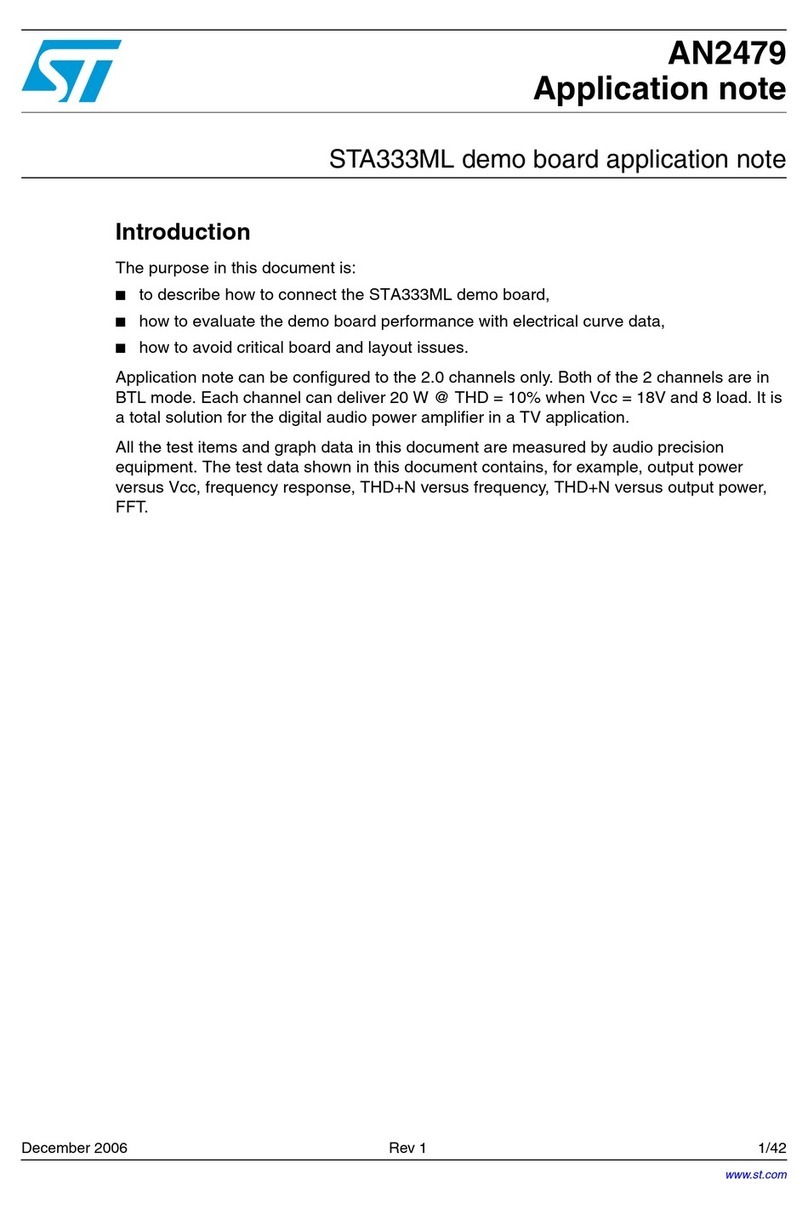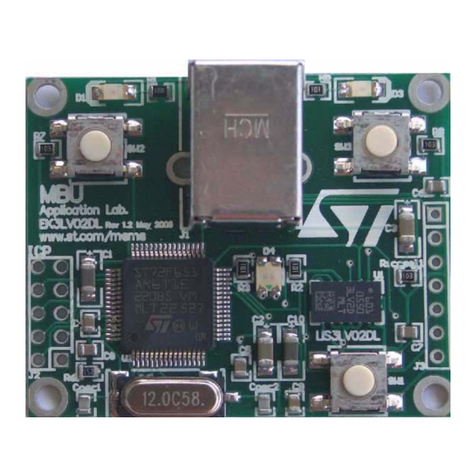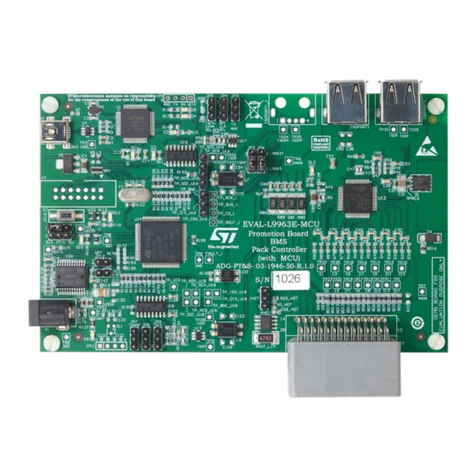
Contents UM0240
2/39
Contents
1 System overview . . . . . . . . . . . . . . . . . . . . . . . . . . . . . . . . . . . . . . . . . . . . 6
2 Power supply . . . . . . . . . . . . . . . . . . . . . . . . . . . . . . . . . . . . . . . . . . . . . . . 7
2.1 Main power supply (VDD) . . . . . . . . . . . . . . . . . . . . . . . . . . . . . . . . . . . . 10
2.2 MCU Flash programming (VPP) . . . . . . . . . . . . . . . . . . . . . . . . . . . . . . . . 10
2.3 OpAmp negative supply (-5V) . . . . . . . . . . . . . . . . . . . . . . . . . . . . . . . . . 11
3 Microcontroller . . . . . . . . . . . . . . . . . . . . . . . . . . . . . . . . . . . . . . . . . . . . 12
3.1 Microcontroller features . . . . . . . . . . . . . . . . . . . . . . . . . . . . . . . . . . . . . . 12
3.2 RS-232 Interface . . . . . . . . . . . . . . . . . . . . . . . . . . . . . . . . . . . . . . . . . . . 12
3.3 Internal time base generation . . . . . . . . . . . . . . . . . . . . . . . . . . . . . . . . . . 12
4 10-bit digital-to-analog converter (DAC) . . . . . . . . . . . . . . . . . . . . . . . . 13
5 Operational amplifiers (OpAmp) . . . . . . . . . . . . . . . . . . . . . . . . . . . . . . 14
6 Interfaces and connectors . . . . . . . . . . . . . . . . . . . . . . . . . . . . . . . . . . . 15
6.1 USB . . . . . . . . . . . . . . . . . . . . . . . . . . . . . . . . . . . . . . . . . . . . . . . . . . . . . 16
6.2 RS-232 Interface . . . . . . . . . . . . . . . . . . . . . . . . . . . . . . . . . . . . . . . . . . . 17
6.3 Motor control . . . . . . . . . . . . . . . . . . . . . . . . . . . . . . . . . . . . . . . . . . . . . . 17
6.4 Power line communication . . . . . . . . . . . . . . . . . . . . . . . . . . . . . . . . . . . . 18
6.5 In-circuit communication . . . . . . . . . . . . . . . . . . . . . . . . . . . . . . . . . . . . . . 19
6.6 Power supply . . . . . . . . . . . . . . . . . . . . . . . . . . . . . . . . . . . . . . . . . . . . . . 19
6.7 Jumpers . . . . . . . . . . . . . . . . . . . . . . . . . . . . . . . . . . . . . . . . . . . . . . . . . . 19
7 Switches . . . . . . . . . . . . . . . . . . . . . . . . . . . . . . . . . . . . . . . . . . . . . . . . . . 22
8 LEDs . . . . . . . . . . . . . . . . . . . . . . . . . . . . . . . . . . . . . . . . . . . . . . . . . . . . . 23
9 Applications . . . . . . . . . . . . . . . . . . . . . . . . . . . . . . . . . . . . . . . . . . . . . . . 24
9.1 Power line communication . . . . . . . . . . . . . . . . . . . . . . . . . . . . . . . . . . . . 24
9.2 Motor control . . . . . . . . . . . . . . . . . . . . . . . . . . . . . . . . . . . . . . . . . . . . . . 25
10 Firmware . . . . . . . . . . . . . . . . . . . . . . . . . . . . . . . . . . . . . . . . . . . . . . . . . 26


